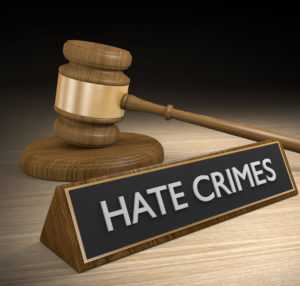
New statistics show that hate crimes in Minnesota are falling, but cases of elder abuse are on the rise. Today, we take a look at both crimes to learn why.
Hate Crimes in Minnesota
Hate crimes, otherwise known as bias crimes, are categorized by the FBI as “criminal offenses against a person or property motivated in whole or in part by an offender’s bias against race, religion, disability, sexual orientation, ethnicity, gender or gender identity.” Unfortunately, hate crimes have been in the national news of late in the wake of the Orlando shooting in which a shooter targeted a gay nightclub, killing 49 individuals.
The Southern Poverty Law Center recently released some information about the rates at which certain groups are disproportionately targeted by hate crimes given their share of the population. The SPLC reports that:
- LGBT people are targeted by hate crimes at more than 8 times the rate the size of their population would suggest they would be.
- Jews were targeted a 3.5 times the rate.
- African Americans were targeted a 3.2 times the rate.
- Muslims were targeted at 1.9 times the rate.
- Whites were targeted at 0.2 times the expected rate.
Those numbers reflect the national trends, but how does Minnesota stack up? According to reported hate crimes between 2010 and 2014, race appears to be the biggest factor in the commission of a hate crime. Of the nearly 600 hate crimes reported over those five years, 319 were believed to be motivated by race, 114 by sexual orientation, 77 by religion, 75 by ethnicity and four by disability, although some crimes may have involved multiple factors. The statistics also noted that the leading characteristics for committing a hate crime are being a white male between the ages of 11 and 20.
Although hate crimes are still clearly a problem, we’ve actually noticed a decrease in the amount of reported hate crimes each year. There were 307 reported hate crimes in Minnesota in 1995, and that number dropped to 103 in 2015. We’re going in the right direction, but we still have a long way to go, especially when you consider how many hate crimes go unreported. According to a 2013 study by the U.S. Justice Department, two out of three hate crimes are not reported to police. The most common reasons why the crimes went unreported is because victims felt like police would not be able to help, they feared retribution or they said it wasn’t a big enough deal to report the crime. Clearly we still have progress to make when it comes to preventing and prosecuting hate crimes.
Elder Abuse Up in Minnesota
Social workers, law enforcement agents, nursing home workers and lawyers all met last week at the University of Minnesota to address some growing concerns over elder abuse throughout the state. One of the talking points was the fact that the state Elder Abuse Hotline, which funnels 169 county phone numbers into one elder abuse call center, receives nearly 1,000 elder abuse tips each week.
When you hear the term elder abuse, you probably think of nursing staff being physically abusive to their residents, but elder abuse goes much deeper than that. There’s emotional abuse, neglect, financial exploitation, medication thefts and much more. Similar to hate crimes, many elder abuse crimes go under reported because victims are embarrassed or don’t want to be viewed as a vulnerable adult.
Erica Yarlagadda, an assistant prosecutor in Hennepin County, said crimes against the elderly are “doubling year-over-year.”
Interestingly, Yarlagadda noted that it’s not the nursing home staff that are most likely to commit the abuse, it’s family members and loved ones who feel entitled to financial gain from their ailing loved one. She said abuse by professionals probably ranks second. If you suspect you or a loved one are the victim of elder abuse or financial exploitation, contact the elder abuse hotline mentioned earlier in this blog at (844) 880-1574.





